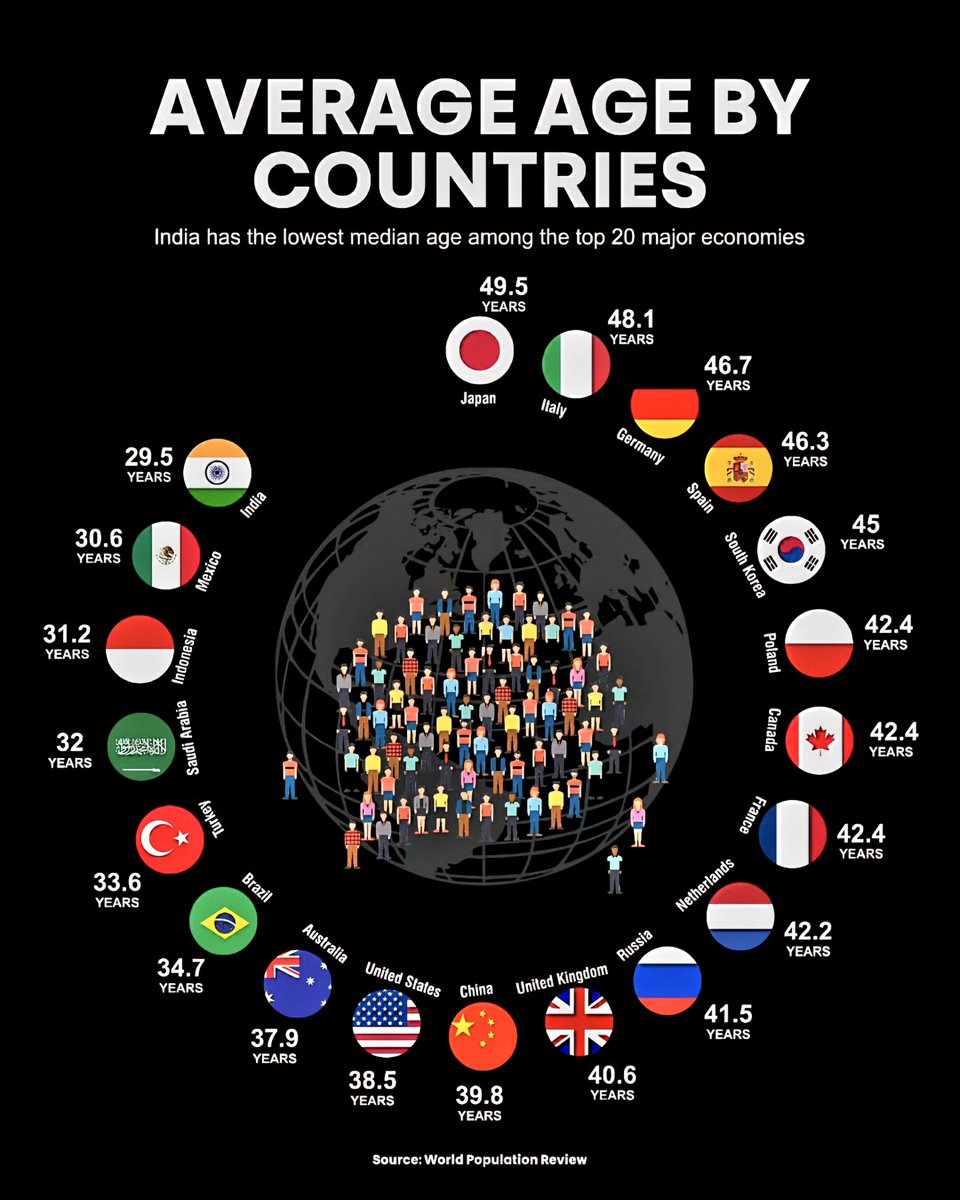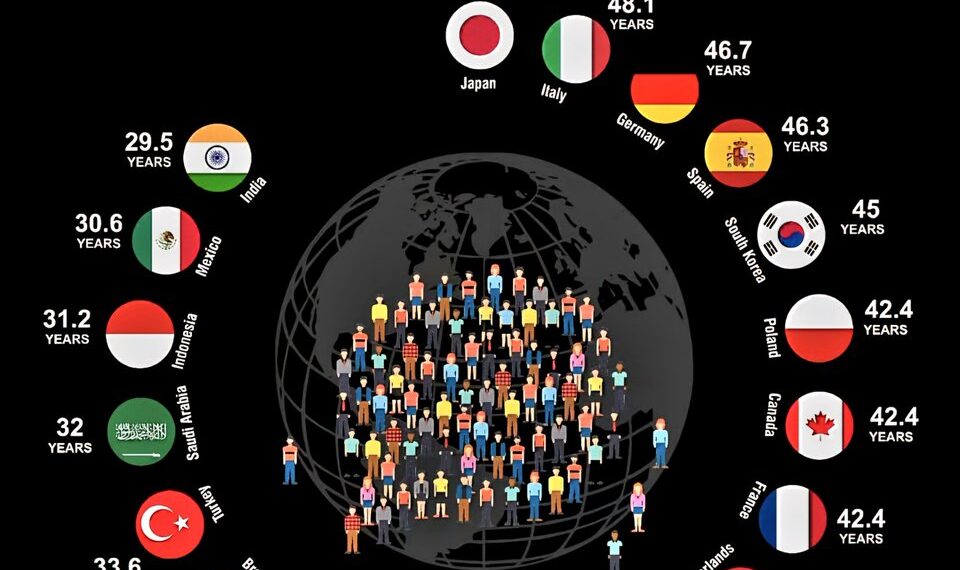Select Language:
Average Age by Countries in 2025

1. Japan: The Oldest Population on Record
Japan continues to hold the dubious title of having the world’s oldest population in 2025. With an average age nearing 48 years, the nation faces significant challenges related to workforce shortages and increased healthcare demands. The aging trend is driven by a combination of low birth rates and high longevity, making Japan’s social services and pension systems strained. Economically, this demographic shift pushes policymakers to reconsider immigration policies and labor participation frameworks to sustain economic growth.
2. Germany: Europe’s Aging Continent
Germany, Europe’s economic powerhouse, has an average age of approximately 47.5 years. The country grapples with an aging population amidst declining birth rates and an increasing number of seniors needing healthcare and social support. To combat these effects, Germany is investing heavily in automation and encouraging higher workforce participation among older adults. Immigration from neighboring countries also plays a crucial role in maintaining economic stability.
3. Italy: The Silver Wave
Italy’s population is also aging rapidly, with an average age of 45.8 years. Cultural and social factors contribute to notably low fertility rates, leading to demographic contraction. Regions like Northern Italy see slightly younger populations due to economic migration, but overall, Italy faces persistent challenges related to pension sustainability and elder care infrastructure. Policy reforms focus on supporting family growth and integrating senior citizens into the workforce.
4. United States: Balancing Youth and Age
The United States has an average population age of about 39 years in 2025. While it remains a relatively younger country compared to European counterparts, the U.S. is experiencing a gradual aging trend. The Baby Boomer generation’s retirement continues to influence the labor market, increasing demand for healthcare workers and senior services. Immigration remains a vital factor in offsetting demographic aging, with policies shifting to attract highly skilled workers and supporting family reunification.
5. China: Moving Towards an Older Future
China’s population is aging faster than anticipated, with the average age rising to around 44 years. The nationwide one-child policy, which was relaxed only a few years ago, has long-term effects on the workforce size and age distribution. The country faces economic challenges associated with a shrinking working-age population and rising healthcare needs among seniors. Efforts to boost fertility rates and develop elder care facilities are gaining momentum.
6. Brazil: A Middle-Aged Population in Transition
Brazil’s population now has an average age of approximately 37 years. The country is experiencing demographic changes as birth rates decline and life expectancy increases. This transition presents opportunities for economic growth but also requires investments in health, education, and social services tailored to an aging populace. Urbanization continues to influence demographic patterns, with major cities hosting the younger populations.
7. India: The World’s Youngest Major Economy
India remains the youngest among the world’s large nations, with an average age of about 29 years. Despite rapid aging in some regions, the majority of India’s population is still youthful, providing a substantial demographic dividend. However, ongoing improvements in healthcare and education are vital to sustain this advantage. Urbanization and rural development are integral to shaping the country’s demographic future.
8. Nigeria: Demographic Boom in the Making
Nigeria’s average age is approximately 18 years, making it one of the youngest nations globally. Its population growth rate remains high, and a large proportion of Nigerians are under 25. This youthful demographic offers enormous potential for economic development but also poses challenges related to job creation, infrastructure, and education. Long-term planning is essential to harness this demographic dividend effectively.
As the world continues to evolve in 2025, demographic trends significantly influence economic, social, and political landscapes. Countries with aging populations are increasingly focused on innovative policies to address the challenges ahead, while younger nations benefit from demographic dividends but must manage the growth wisely. The ongoing demographic shifts will shape global priorities for decades to come.





